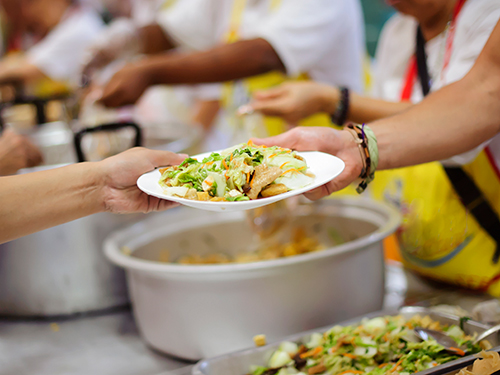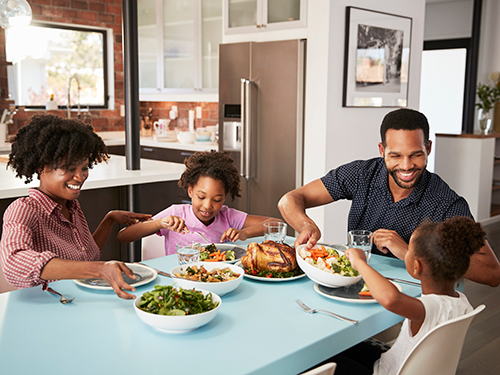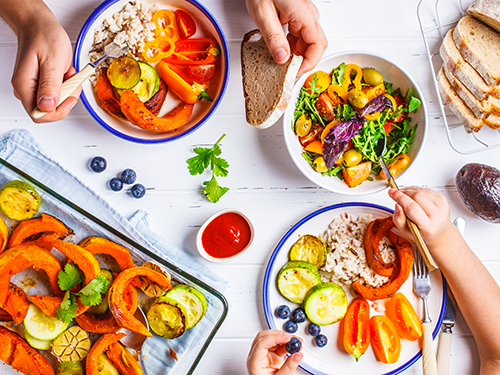
Fact Sheet FS589
Proper food serving procedures are essential in ensuring home food safety. The time from the end of cooking until you and your family eat a meal is very important. A foodborne illness incident may occur if you do not handle and serve cooked foods properly. If you follow the suggestions below when serving food in your home, you can reduce your risk significantly.
Before Serving
It is very important for everyone handling or eating food to first wash their hands with soap and water. If you have long hair, it should be pulled back. The server should put on clean clothing or an apron before serving food to help prevent contaminants from getting into the food.
Always place cooked food in a clean dish for serving, and use a clean spoon or ladle. Never place cooked food back onto the same dish it was on before cooking. Using the same unwashed dish is the surest way to contaminate the cooked food and cause illness. Do not place cooked foods on a countertop or cutting board before serving, unless that surface has been thoroughly cleaned with soap and water. You can easily cause foodborne illness by putting cooked food back onto the same (unwashed) cutting board that you used for cutting the uncooked food.
Use a clean utensil to serve food, rather than your hands. It is a good idea to use a separate spoon or other utensil for serving, rather than letting each person dip into the bowl with their personal spoon. It is especially important for family members not to dip their personal silverware into the serving dish after they have used it to eat with. Any of these activities can cause cross-contamination, which poses a risk to everyone. Those at greater risk include children, pregnant women, the elderly, and anyone with a weakened immune system due to HIV/AIDS, cancer, diabetes, kidney disease, or organ transplant.
Hot Holding of Foods
You should keep cooked foods that are held hot until they are eaten at a temperature above 140°F. This is extremely important to remember. If you keep a food “warm” at a temperature below 140°F, food poisoning bacteria can grow in the food. A cooking or meat thermometer placed in the container of food–but not touching the bottom of the pan–will tell you if the correct temperature is being maintained.
Room Temperature Holding of Foods
The temperature of the room will influence how long you can safely hold a food before you must reheat, refrigerate, or freeze it. The warmer the room’s temperature, the shorter the time allowed. You should never allow any cooked food to sit at room temperature for more than two hours, no matter what the temperature of that room is. If the temperature of the room is 90°F or higher, you should leave the food out no longer than one hour. To keep cold foods cold, you can place food dishes in a large bowl of ice or keep it refrigerated until just before serving. Consider serving food in smaller platters rather than one large platter, and rotate the food platters within two hours. If you or your family do not eat the food within the safe time, you should either reheat the food to 160°F, refrigerate it, or freeze it. You can then handle it as a “leftover” food as described in our companion fact sheet FS588, Handling Leftovers Safely.
Remember that the time after cooking and before eating a food is when that food is the most vulnerable to contamination or the growth of dangerous bacteria. By following these simple guidelines, you can greatly reduce your family’s risk of foodborne illness.
For More Information
Photo credits: iStockphoto.com
December 2019
Copyright © 2025 Rutgers, The State University of New Jersey. All rights reserved.
For more information: njaes.rutgers.edu.
Cooperating Agencies: Rutgers, The State University of New Jersey, U.S. Department of Agriculture, and Boards of County Commissioners. Rutgers Cooperative Extension, a unit of the Rutgers New Jersey Agricultural Experiment Station, is an equal opportunity program provider and employer.



